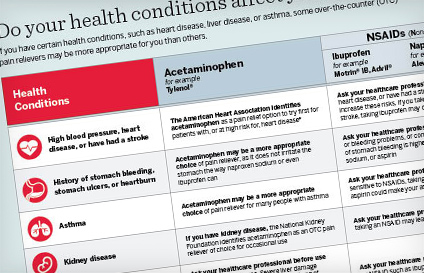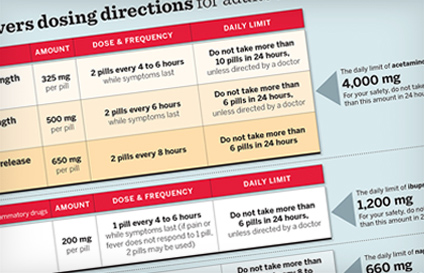Patient education
Reinforce your patient counseling with these concise, visual, easy-to-understand handouts on how to choose, use, and dose OTC pain relievers appropriately.
2-pain-management-plan.jpg

Help patients be active participants in their own recovery. Simple checklist includes personal goal setting, treatment concerns, current medications, OTC analgesic dosage charts.
5.0-grrpro.com-patient-ed-flu-checklist.png

Helps patients take steps toward preventing the flu, recognizing common symptoms, and understanding treatment options for both children and adults.
1_rx_apap_image.jpg

Teaches patients how to check both their OTC and Rx medicines to see if they contain acetaminophen, and why this is so important.
2_otc_apap_image.jpg

Discusses appropriate acetaminophen use—from OTC acetaminophen basics like dosing directions to tips for avoiding harmful side effects.
3_otc_nsaid_image.jpg

Discusses appropriate OTC NSAID use—from NSAID basics like dosing directions to tips for avoiding harmful side effects.
5.0-patient-education-25-nsaid-warning-image.png

Teaches patients what changes were made to the Warnings section on the OTC NSAID label.
5_health_conditions_image.jpg

Gives a list of certain conditions that may affect OTC analgesic choice, and advises patients to talk with you about their health history.
7_adult_dosing_image.jpg

All-in-one chart features directions, including maximum single and daily doses, for OTC acetaminophen, ibuprofen, naproxen sodium, and aspirin.
8_otc_med_label_image.jpg

Helpful graphic demystifies the Drug Facts label and shows patients how labels promote medicine safety.
replacement_image.png

Help patients understand acetaminophen and NSAID differences that could matter to their health. Chart includes a list of common OTC and prescription medicines that contain acetaminophen or an NSAID.
